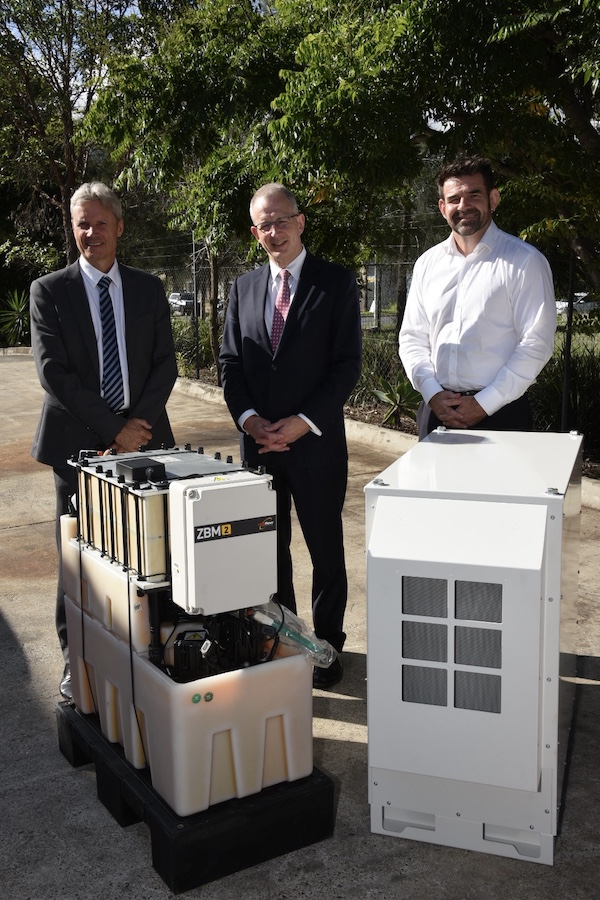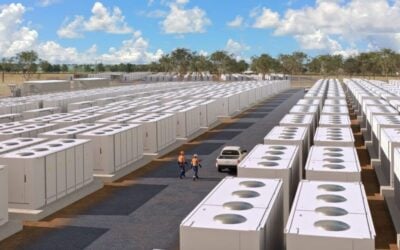
Dozens of zinc-bromine flow battery units will be deployed at 56 remote telecommunications stations in Australia, supplied by manufacturer Redflow.
They are being installed as part of an Australian Federal government initiative to improve the resilience of communications networks in bushfire and other disaster prone areas of the country. Strengthening Telecommunications Against Natural Disasters (STAND) is a multi-faceted programme worth AU$37.1 million (US$28.85 million) in total.
Enjoy 12 months of exclusive analysis
- Regular insight and analysis of the industry’s biggest developments
- In-depth interviews with the industry’s leading figures
- Annual digital subscription to the PV Tech Power journal
- Discounts on Solar Media’s portfolio of events, in-person and virtual
It came about following bushfires in 2019-2020 and supports the rolling out of satellite connectivity to emergency responders including fire services and evacuation centres, boosting portable telecoms equipment reserves and strengthening mobile phone base stations in regional and remote areas.
The Australia Communications and Media Authority said that the majority of mobile network outages during the bushfires were caused by power failures and AU$18 million of the STAND initiative’s funding is going towards a ‘Mobile Network Hardening Program’. In the initial first phase of that programme, Australian cellphone network providers Optus, Telstra and TPG will be given AU$13.2 million to add battery backup upgrades to nearly 500 network base stations in total.
Redflow devices are being deployed by carrier Optus, which earlier this month completed its first installation at a site in Victoria which has been deemed a mobile communications ‘black spot’ i.e. it receives poor or no reception. Optus is planning to deploy Brisbane-headquartered Redflow’s battery units at “at least 56” black spots in total under the programme, carrying on a working relationship with the manufacturer that saw Optus make its first Redflow zinc-bromine battery deployment in 2019.
Redflow, which is listed on the Australian Stock Exchange, has designed its batteries for deep-cycling, long-duration stationary energy storage applications, making them scalable from single battery installations for large residential properties, up to grid-scale. The company’s range, including the ZCell residential and ZBM2 commercial units are available with 10kWh storage but are stackable into multiples of that capacity.
Follows on from previous international deployments to support telecommunications providers
A Redflow company spokesperson told Energy-Storage.news that the Optus proposed project is still in the planning stages, so exact details of size and capacity of battery systems to be used at the telecoms sites are not yet available. However, the spokesperson said that generally speaking, other telecommunication sites using Redflow batteries “range in size from two batteries for a weak-grid deployment to six batteries for a fully off-grid deployment”.
The systems come with 10-year warranties and the company claims the entire battery is made from easily available, recyclable or reusable components, including the electrolyte solution, which after use can be put into a new system and reused after purification. The batteries can also tolerate use at high temperatures safely without risk of thermal runaway, which can cause fires in lithium-ion cells.
Like other flow batteries, the product allows for 100% daily depth of discharge cycling over its lifetime without degradation of cells and enables the decoupling of energy and power, which means larger capacities of energy can be stored simply by increasing the size of the tanks storing the electrolyte solution. The company is setting up a 30MWh manufacturing facility in Thailand and has marketed its devices as a way to increase self-reliance from the grid and utilities and to enable higher shares of renewable energy penetration and solar energy self-consumption. One customer at a remote region in Australia affected by bushfires said that even without the risk of fires his agricultural property suffers frequency blackouts and that his investment in Redflow batteries would pay back within eight to 10 years, or even quicker if electricity prices continue to go up.
Redflow has already marketed and sold flow batteries to other telecommunications providers, receiving repeat orders from New Zealand’s Rural Connectivity Group (RCG) — which was set up by that country’s government as a critical infrastructure project to improve connectivity in rural areas. Redflow has also received orders from a telecoms provider in South Africa.
Australian Federal Minister for Communications, Urban Infrastructure, Cities and the Arts, Paul Fletcher visited Redflow’s headquarters earlier this month to launch its partnership with Optus.






